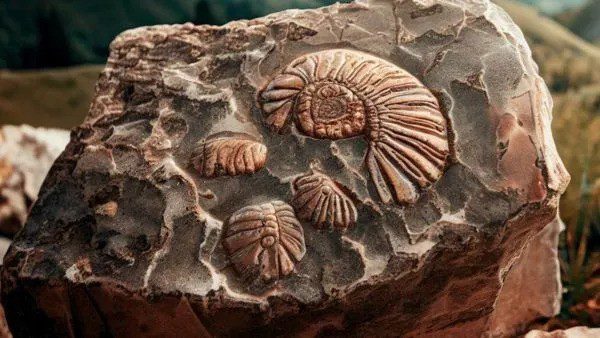The Hidden Fossils of Ladakh, found in a high-altitude desert nestled in the northernmost region of India, contribute to the region’s renown for its stark beauty, ancient monasteries, and adventure tourism. However, beyond its scenic landscapes lies a geological treasure trove—the hidden fossils of Ladakh. These fossils, embedded in rock formations across the region, tell a fascinating story of an ancient sea that once covered the area. The marine fossils of Ladakh are more than just remnants of prehistoric life; they are crucial to understanding the geological history of the Himalayas and Earth’s distant past.
Introduction: Unearthing Ladakh’s Ancient Marine Past
Overview of Ladakh’s Geological Importance
Ladakh holds a unique place in the world of geology. As part of the Indian Himalayan region, it provides a clear record of Earth’s tectonic history. Millions of years ago, before the Himalayas rose to their towering heights, Ladakh was submerged under the Tethys Sea, a vast ocean that existed between the supercontinents of Gondwana and Laurasia. Today, the fossils found in Ladakh serve as a window into this ancient ocean, offering insight into the marine life that thrived here.
Why Fossils in Ladakh Matter for Paleontology
The fossils unearthed in Ladakh are vital to paleontologists studying Earth’s past ecosystems. These marine fossils include ammonites, gastropods, brachiopods, and coral species, all of which were once part of an ancient marine ecosystem. By examining these fossils, scientists can trace the geological evolution of the Himalayas and understand the environmental changes that occurred over millions of years. The fossilized sea creatures found in Ladakh offer evidence of the rich biodiversity that once flourished under the waters of the Tethys Ocean.
The Geological Evolution of the Himalayas and Ladakh
The Formation of the Himalayas and the Role of the Tethys Sea
The Himalayas are the result of the tectonic collision between the Indian Plate and the Eurasian Plate, a process that began around 50 million years ago. Before this colossal collision, much of what is now the Himalayan region, including Ladakh, lay beneath the Tethys Sea. As the Indian Plate slowly pushed northward, it compressed the ocean floor, forcing it upward and eventually forming the Himalayan mountain range. Embedded within the rocks of this ancient sea bed are fossils that have been lifted to altitudes over 3,000 meters, making Ladakh’s fossils an extraordinary example of marine life preserved in the mountains.
The Uplifting of Fossils: From Sea Floor to Himalayan Peaks
The uplifting of marine fossils from the depths of the Tethys Sea to the peaks of the Himalayas is a direct consequence of tectonic activity. Over millions of years, sedimentary rocks containing these fossils were subjected to immense pressure, forcing them upwards. This process has preserved the fossils in remarkable condition, making Ladakh a key area for studying both geological processes and prehistoric marine life. Visitors today can marvel at fossilized sea creatures while standing in the middle of one of the world’s most breathtaking mountain ranges.
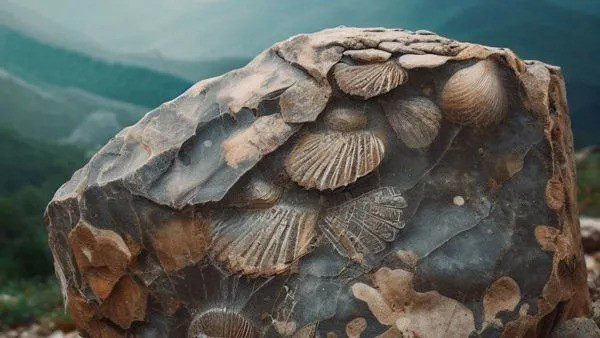
Fossil Discovery in Ladakh: Tracing Marine Life in the Himalayas
Major Fossil Sites in Ladakh
Ladakh is home to several fossil-rich sites that attract geologists, paleontologists, and tourists alike. Key locations include Hemis, Lamayuru, and the Chang La Pass, where marine fossils such as ammonites are commonly found. The Hemis National Park is particularly notable for its well-preserved fossil beds, where some of the most significant discoveries have been made. Lamayuru, often referred to as the “Moonland of Ladakh,” is another hotspot for fossils, thanks to its unique sedimentary rock formations.
What Fossils in Ladakh Tell Us About Prehistoric Marine Ecosystems
The marine fossils found in Ladakh reveal a great deal about the ancient ecosystems that once existed here. Ammonites, for example, are extinct marine mollusks that thrived in the Tethys Sea. Their fossilized remains suggest that the Tethys was home to a diverse array of marine life, including corals, brachiopods, and other marine invertebrates. By studying these fossils, scientists can piece together a picture of marine biodiversity during the Mesozoic and early Cenozoic eras, shedding light on how these creatures adapted to their marine environment.
The Tethys Ocean’s Fossil Legacy in Ladakh
What Was the Tethys Ocean?
The Tethys Ocean was a massive sea that separated the northern Laurasian landmass from the southern Gondwana supercontinent. Over hundreds of millions of years, the Tethys served as a cradle for a diverse array of marine organisms. As the Indian subcontinent drifted northward, the Tethys gradually shrank, eventually disappearing with the collision of the Indian and Eurasian plates. The fossils left behind in regions like Ladakh are evidence of the rich marine ecosystems that once thrived in this ancient sea.
Tethys Ocean Fossils: Insights into Ancient Marine Life
The fossils of the Tethys Ocean, particularly those found in Ladakh, offer critical insights into the creatures that lived during this period. Ammonites, a key fossil species, are often found in sedimentary rock formations across Ladakh. These fossils indicate that the Tethys Ocean supported a vast and varied marine ecosystem, with different species thriving at different depths and in different environments. Coral fossils, for example, point to the presence of shallow marine reefs, while deeper water fossils such as certain gastropods suggest a complex and interconnected marine world.
How Marine Fossils Shaped the Geology of Ladakh
The Role of Fossils in Understanding Ladakh’s Geological Formation
Fossils are essential to understanding the geological history of Ladakh. The sedimentary layers that contain marine fossils offer a timeline of the region’s transformation from ocean floor to mountain range. By studying these layers, geologists can map the movement of tectonic plates and the subsequent uplift of the Himalayas. The presence of marine fossils in Ladakh also helps geologists identify the specific conditions that existed in the Tethys Sea, from water depth to temperature and salinity.
Fossil Evidence Supporting Ancient Sea Beds in the Himalayas
Fossilized marine life in Ladakh provides concrete evidence that this region was once part of an ancient sea bed. The types of fossils found, such as ammonites, corals, and bivalves, are indicative of marine environments that existed millions of years ago. These fossils are often found in limestone formations, which form from the accumulation of marine organisms’ calcium carbonate skeletons over long periods. The discovery of such fossils at high altitudes serves as a reminder of the immense tectonic forces that shaped the Himalayas.
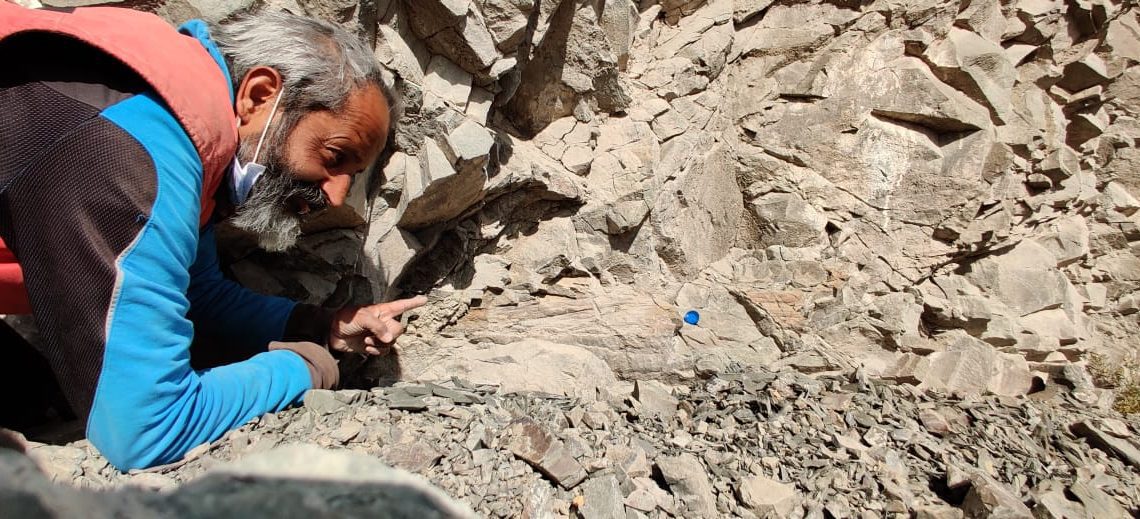
Ladakh’s Hidden Fossils: A Paleontologist’s Treasure Trove
Fossil Hunting in Ladakh: Best Locations and Finds
For those interested in fossil hunting, Ladakh offers numerous locations to explore. Chang La Pass, at an altitude of 5,360 meters, is one of the most notable sites, known for its abundant ammonite fossils. The Zanskar Valley is another key location, where both ammonites and gastropod fossils have been discovered. When exploring these regions, it is important to note that fossil collecting should be done responsibly, ensuring that these geological treasures are preserved for future generations.
The Significance of Ladakh’s Fossils for Global Paleontology
The fossils found in Ladakh have far-reaching implications for the field of global paleontology. They provide a unique opportunity to study the evolution of marine life and the geological processes that have shaped our planet. The marine fossils of Ladakh have helped scientists better understand the tectonic activity that led to the rise of the Himalayas and provided crucial data for reconstructing ancient marine ecosystems. Ladakh’s contribution to the global fossil record is invaluable, making it a key location for paleontological research.
Understanding Ladakh’s Fossilized Marine Life: Key Fossils Found
Common Marine Fossils Found in Ladakh
Among the most common fossils found in Ladakh are ammonites, which are spiral-shaped marine mollusks that lived in the seas of the Mesozoic era. Brachiopods, bivalves, and coral fossils are also prevalent, all of which point to the existence of ancient marine reefs. These fossils provide vital clues about the diverse marine ecosystems that existed in the Tethys Ocean, long before the rise of the Himalayas.
Fossilized Sea Creatures: What They Tell Us About the Ancient Ecosystem
The fossilized sea creatures found in Ladakh offer a glimpse into a time when the area was submerged under a warm, shallow sea. Ammonite fossils suggest that the Tethys Sea was home to a thriving ecosystem of predators and prey, while coral fossils indicate the presence of reef ecosystems that supported a wide variety of marine life. These fossils help scientists understand the biodiversity of the Tethys Ocean and the evolutionary history of marine organisms.
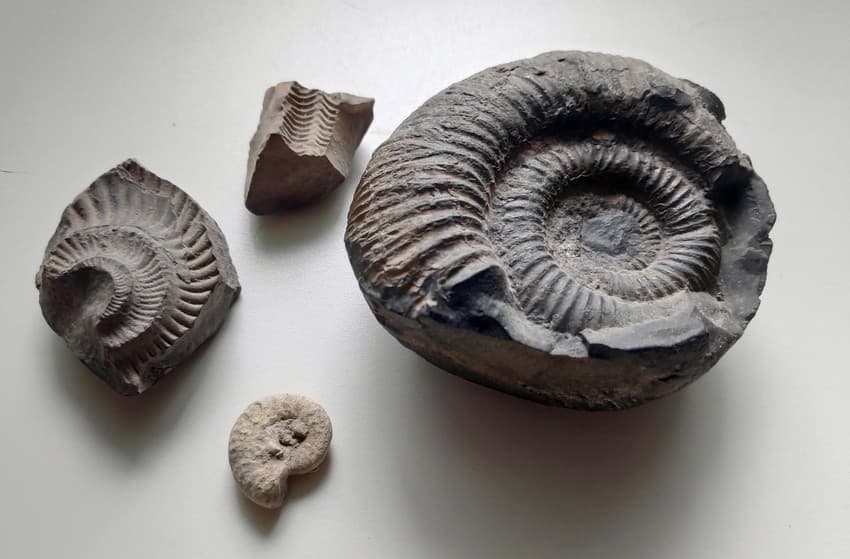
How to Visit Ladakh’s Fossil Sites: A Guide for Fossil Enthusiasts
Top Fossil Sites to Visit in Ladakh
For travelers interested in exploring Ladakh’s fossil sites, some of the top locations include Hemis, Lamayuru, and Chang La Pass. These sites are easily accessible from major towns such as Leh, and many guided tours are available for fossil enthusiasts. Each of these areas offers the opportunity to find fossilized marine life, with ammonites being one of the most common discoveries.
Responsible Fossil Hunting: Preservation and Ethics
While fossil hunting can be an exciting adventure, it is essential to approach it with respect for the local environment and its geological significance. Visitors should follow local guidelines regarding fossil collection and ensure that they do not disturb the natural landscape. The preservation of fossils is critical, both for scientific research and for future generations to appreciate the rich geological history of Ladakh.
Conclusion: Ladakh’s Hidden Fossils—Unlocking the Secrets of Ancient Seas
The Legacy of Marine Fossils in the Himalayas
The marine fossils of Ladakh offer invaluable insights into the ancient seas that once covered this region and the dramatic tectonic forces that reshaped the landscape. These fossils not only deepen our understanding of Himalayan geology but also provide a tangible connection to Earth’s distant past.
Why Ladakh is a Must-Visit for Paleontology Enthusiasts
For those with an interest in paleontology, Ladakh offers an unparalleled opportunity to explore one of the world’s most fascinating fossil sites. The region’s geological history, combined with its breathtaking landscapes, makes it a must-visit destination for anyone eager to uncover the mysteries of Earth’s prehistoric oceans.
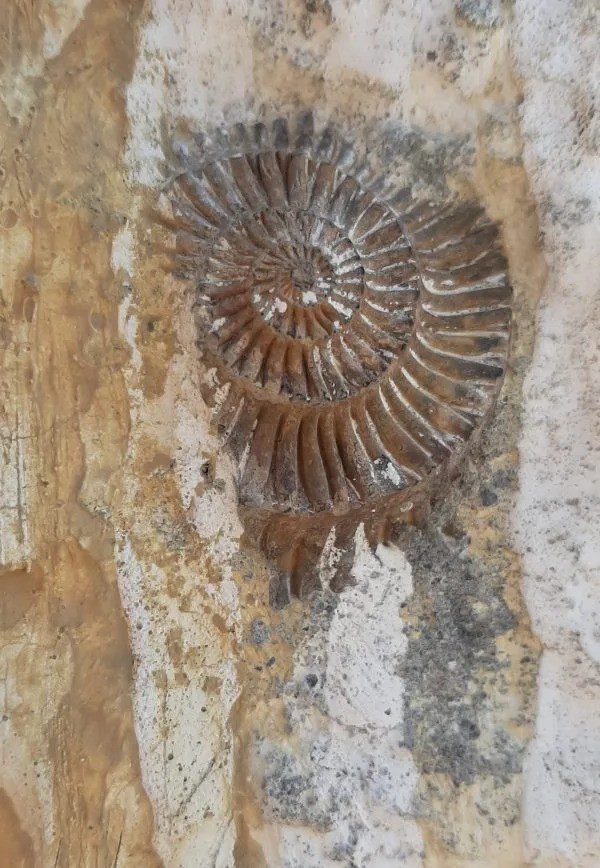
FAQs
Q: What kind of fossils are found in Ladakh?
A: Ladakh is home to marine fossils, primarily ammonites, brachiopods, and corals, which date back to the time when the region was submerged under the Tethys Sea.
Q: Why are there marine fossils in the Himalayas?
A: The Himalayas were formed by the collision of the Indian Plate with the Eurasian Plate, uplifting the Tethys Sea floor and its fossils to great altitudes.
Q: Where can I find fossils in Ladakh?
A: Some of the best places to find fossils in Ladakh are Hemis National Park, Lamayuru, and Chang La Pass, where ammonites and other marine fossils are commonly discovered.
Q: How old are the fossils found in Ladakh?
A: The fossils found in Ladakh are millions of years old, dating back to the Mesozoic and Cenozoic eras, when the region was part of the Tethys Ocean.
Q: Can tourists collect fossils in Ladakh?
A: Fossil collection should be done responsibly, and visitors should adhere to local regulations to preserve these geological treasures for scientific study and future visitors.
Q: What is the significance of Ladakh’s fossils for science?
A: The fossils in Ladakh provide important clues about the geological evolution of the Himalayas and offer insight into the ancient marine ecosystems that once thrived in the Tethys Sea.

